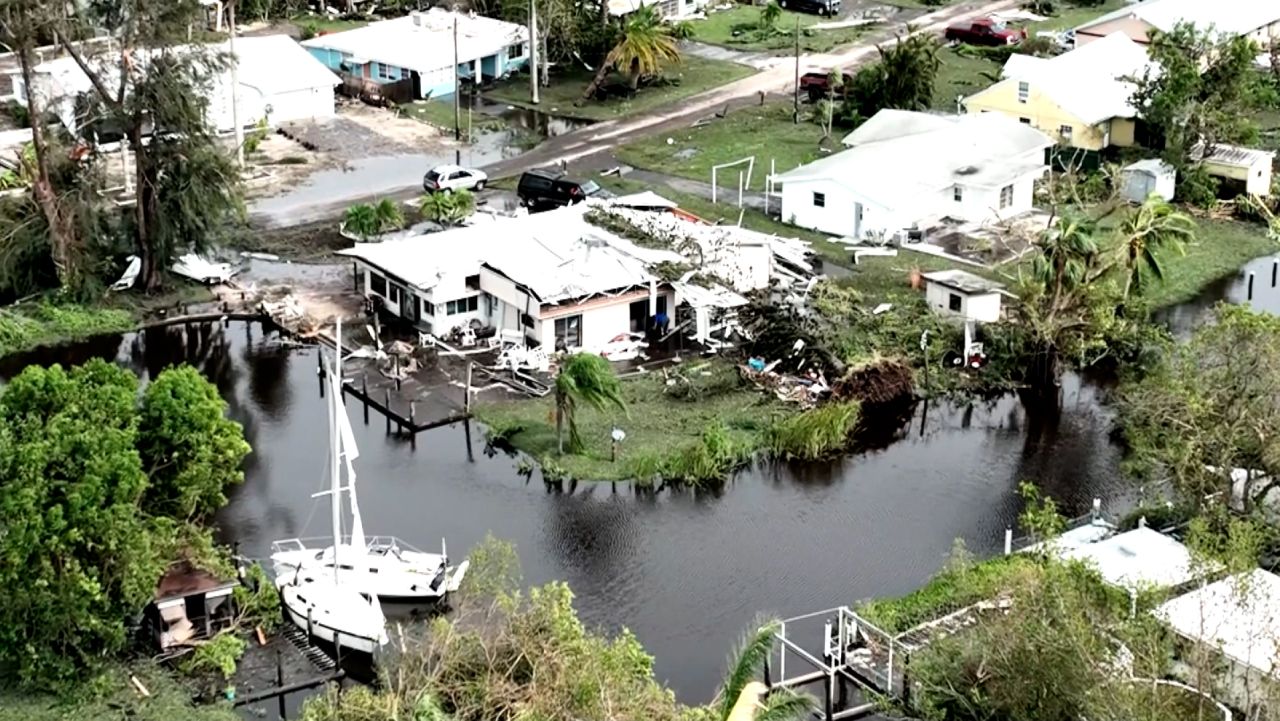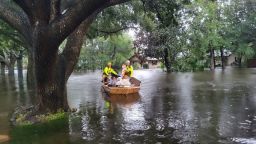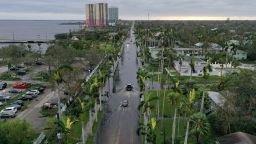Editor’s Note: Stephen Strader is an associate professor of geography and the environment at Villanova University. He studies how human environments are vulnerable to natural disasters. The views expressed here are his own. Read more opinion on CNN.
After hours of battling Hurricane Ian’s high winds, torrential rain and storm surges nearing 12 feet in some locations, residents are left to pick up the pieces. In the hours and days after Ian, the true destruction will be revealed, shedding light on the hardest hit areas.
Those residents who did not evacuate are facing life-threatening conditions, while emergency responders deal with an overwhelming volume of calls from those in need of help. Unfortunately, this scene is all too common to the state of Florida.

Thirty years ago, Florida’s Miami-Dade County was hit by category 5 Hurricane Andrew, leading to over $50 billion in losses (adjusted for inflation), destroying over 60,000 homes and leaving more than 170,000 homeless.
In the wake of Andrew, the federal government enacted a plan to improve the construction quality of Florida’s homes giving the state some of the strongest building codes in the nation.
While Florida’s improved construction standards may have somewhat protected against damage and enhanced survivability for those in the path of storms that followed, other disaster factors, such as rapid, unchecked population growth and a changing climate, have tipped the disaster scale in the wrong direction.
If we rewind back to the early 1910s, a man named Carl Fisher (best known as the automobile magnate responsible for building the Indianapolis Motor Speedway) decided to take a vacation on what is now known as Miami Beach.
He quickly realized the moneymaking opportunity at hand, buying, clearing and filling in thousands of acres of swamps and mangroves to make way for new waterfront property where investors would line up for the foreseeable future to build homes and hotels for those seeking a piece of paradise.
In building up the area, Fisher effectively replaced sponge-like natural wetlands and mangroves that protect the inland areas from storm waters with hardened, impervious surfaces that would go on to bear the brunt of hurricanes like Andrew and now Ian.
Unfortunately, this pattern of rapid development along both the Atlantic and Gulf coastlines has continued into the 21st century, setting the stage for disasters. For example, Florida’s population has grown nearly 60% since Hurricane Andrew, which is two times faster than the national average over that same time period, according to a US Census Bureau data analysis. With increasing population comes a greater number of homes. In fact, the number of homes in Florida has nearly doubled from 5.7 million in 1990 to 10 million in 2020, based on government data.
But why does this matter for hazard events like Hurricane Ian?
The simple fact is that when more people are exposed to a natural hazard such as a hurricane, the odds for a major disaster to occur are greater. As our population and built environment grows and expands, we are more readily placing ourselves in the harm’s way. The wetlands and mangroves that once acted as natural “buffers” to the rising waters and waves that come with hurricanes are now shrinking or gone. They have been replaced by subdivisions.
You may be asking yourself, what is the difference between a natural hazard and disaster? So, before going any further, let’s define them.
Broadly, a “hazard” is a geophysical event such as a tropical storm, tornado, earthquake, etc., that poses a potential threat to humans and the things we value – our homes, vehicles, agriculture. “Disasters,” in contrast, are singular or interactive hazard events that have a profound impact on local people or places either in terms of injuries, property damages, loss of life or environmental impacts.
Not all hazards result in disaster, but societal factors such as exposure (environmental characteristics that position a system to be affected by a hazard) and vulnerability (the potential for loss and to suffer harm from a hazard) most often dictate hazard impact severity and the likelihood the event is categorized as a disaster.
Unfortunately, these factors, have been increasing over time due to both a changing atmosphere and society.
While many scientists are focused on how climate change is influencing the risk (the likelihood of the occurrence of an event) of tropical storms and hurricanes, others, like myself, are also examining “the other side of the disaster coin”: exposure and vulnerability changes.
For the better part of a decade, my collaborator Walker Ashley at Northern Illinois University and I have sought to explain the importance of the changing exposure element when it comes to disaster. This conceptual model is referred to as the “expanding bull’s-eye effect.” It illustrates that as “targets”– humans and their possessions – of geophysical hazards enlarge and spread with population and built-environment growth, the odds of disaster must also increase.
Moreover, it is not solely the population magnitude that is important in creating disaster potential, it is how the population and built environment are distributed across the landscape (for example, building along high-risk coastlines) that increases risk for and vulnerability to disaster. This is critically important because while climate change may amplify the risk of certain hazards, the root cause of escalating disasters is not necessarily event frequency- or risk-related; it’s population growth and the replacement of natural areas with developed ones.
Get our free weekly newsletter
- Sign up for CNN Opinion’s newsletter.
- Join us on Twitter and Facebook
So, where does this leave us?
Tropical storm risk and exposure in Florida has and will continue to rapidly change due to both a changing climate and built-environment landscape. Going forward, we need to more strongly consider not only how we build our homes and communities, but also where we build them.
As humans, we are not innocent or powerless in the fight against climate change and disasters. In fact, we play a very critical role by deciding where and how we build. We ultimately decide what risks are worth taking. Right now, we are choosing to sit at the table and gamble, even though the deck is stacked against us. Perhaps we have Carl Fisher (and so many who came after him) to thank for that?





